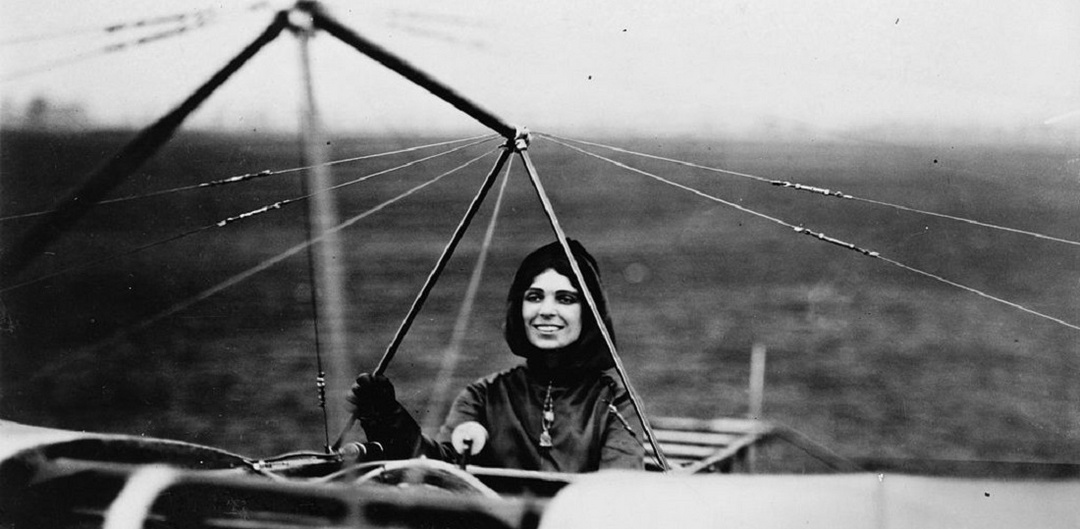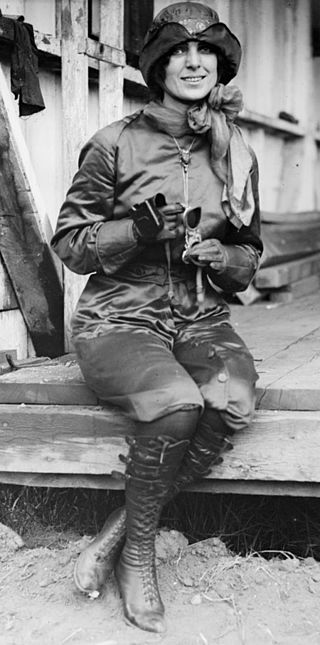Celebrating pilot Harriet Quimby, America’s 1st female pilot

On 2 August 1911 the Aero Club of America granted an FAI pilot’s licence to the adventure-loving journalist and screenwriter Harriet Quimby. It was the first licence to be awarded to an American female aviator.
With a wealthy background and liberal upbringing among the artists and bohemians of San Francisco at the turn of the 20th Century, Quimby moved in circles in which women were empowered to follow their own path. With a flair for writing and a love of travel, she moved to New York and excelled in a post at Leslie’s Illustrated Weekly as a reporter and photographer.
Born with a natural passion for new technologies, Quimby was noted to be one of the first journalists to adopt the use of a typewriter and even drove herself around in a bright yellow car; it was inevitable that she would become enthralled by the exciting advances in aviation.
An encounter with the Moisant family gave her the opportunity to discover aviation. Whilst covering New York’s 1910 Belmont Air Meet as a journalist, she witnessed the thrilling sight of John Moisant flying around the Statue of Liberty and crossing the finish line in first position in his self-designed and -built Moisant Biplane – the world’s first all-metal aircraft. John and his sister Matilde became close friends of Quimby, with the two women learning to fly together in Hempstead, New York. After four months and 33 flying lessons, Quimby received licence number 37 from the ACA and Matilde become the second female to be awarded the licence.
This licence to fly anywhere in the world gave her the opportunity for adventure, freedom and fun. Never one to blend in with the crowds, Quimby joined the Moisant International Aviators and began to earn an income as part of the exhibition team, splendidly bedecked head to toe in an outfit of violet satin, with her trousers tucked into her elegant lace-up boots. She wrote articles about her exciting experiences, travelling around the US and in Mexico as a pilot.

Yet her sights lay even further afield. With tales of a new generation of pioneering female aviators hitting the headlines over in Europe, in 1912 Quimby decided to embark on a challenge that she hoped would help mark her place in history: a cross-channel flight from England to France, a feat which had been achieved by Louis Blériot for the first time only two years before. Quimby would be the very first female to make the attempt. Crossing in dense fog, she meticulously followed the compass as British pilot Gustav Hamel had shown her, landing safely in Hardelot, only 40km south of her intended destination. This daring adventure was not to grab the media attention it deserved; unfortunately the event was overshadowed in the newspapers by the sinking of the Titanic two days previously.
Known for her attention to safety precautions, Quimby was a very competent pilot who saw no reason that other women should not enjoy aviation. Quoted in Good Housekeeping, she commented:
“There is no sport that affords the same amount of excitement and enjoyment, and exacts in return so little muscular strength. It is easier than walking, driving or automobiling; easier than golf or tennis … Flying is a fine, dignified sport for women…and there is no reason to be afraid so long as one is careful.”
Yet these early days of aviation were fraught with danger and many early pioneers lost their lives in aircraft accidents. And so it was that Quimby tragically lost her life at the Harvard-Boston Aviation Meet just a few weeks after her channel crossing: flying with the event organiser’s son William Willard as a passenger in a Blériot monoplane, she lost control of the aeroplane and the pair were ejected into the waters of Boston harbour, watched in horror by 5,000 spectators.
A woman who embraced the new century and its innovations, Harriet Quimby is remembered as a courageous pilot and female trail blazer whose legacy continues to inspire those who follow in her flight path.
“In my opinion, there is no reason why the aeroplane should not open a fruitful occupation for women. I see no reason why they cannot realize handsome incomes by carrying passengers between adjacent towns, why they cannot derive incomes from parcel deliveries, from taking photographs from above or from conducting schools for flying”
- Harriet Quimby, America’s 1st female pilot
Images: George Grantham Bain collection at the Library of Congress.

